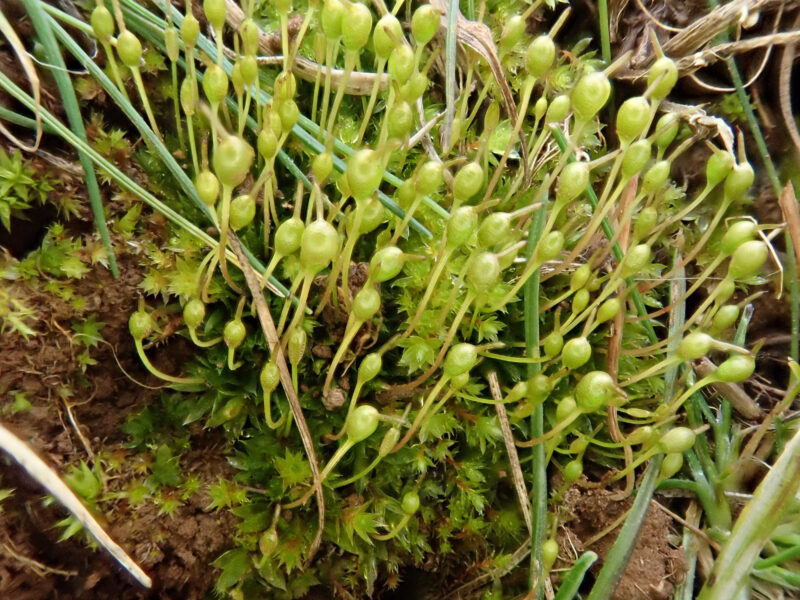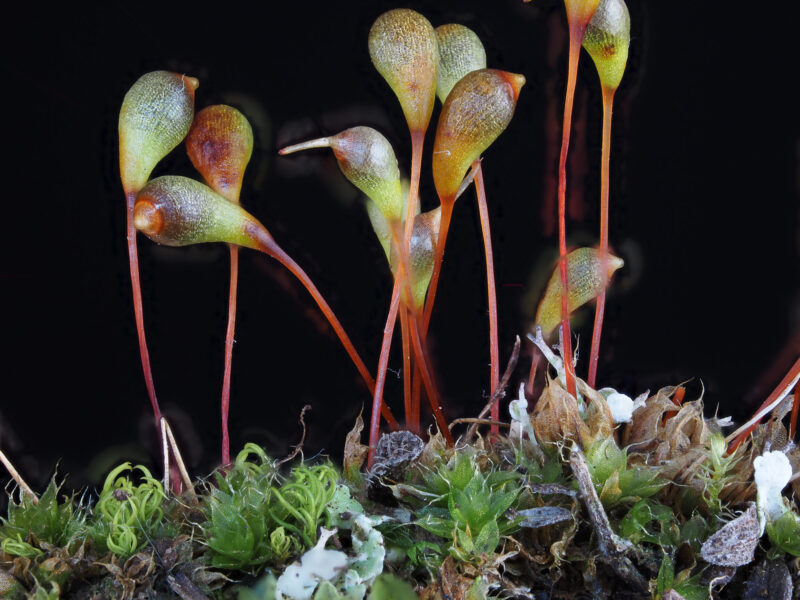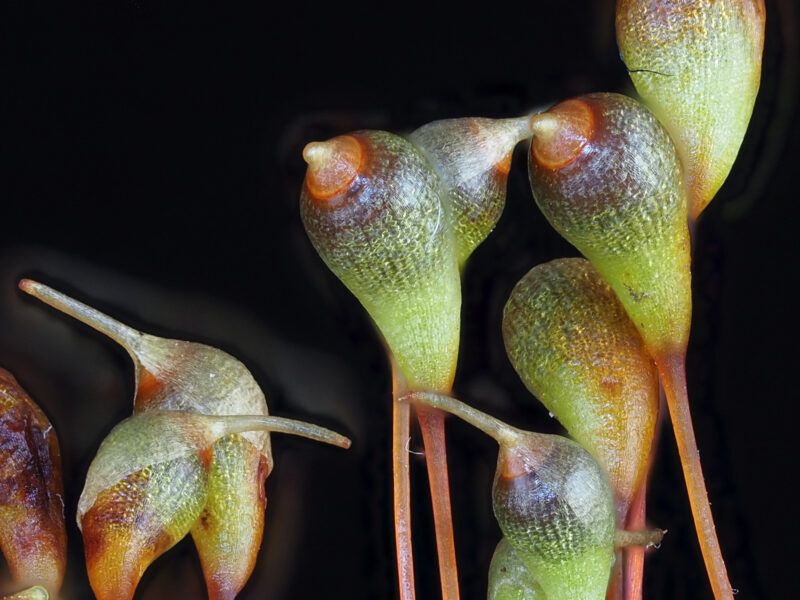Identification notes
This rather rare moss does not currently have its own account in the Field Guide. However, it is not a hard plant to identify, once you are familiar with its very specific kind of habitat, typically disturbed, thin soil on sheltered limestone exposures. It especially favours Carboniferous Limestone, where it sometimes grows with the even rarer E. pulchellus and/or E. mouretii.
When it has mature or near-mature capsules, in early spring, they are distinctively Entosthodon-like, pyriform in shape and with a lid without much of a point. The large, lax leaf cells can easily be seen with a hand-lens and will confirm it as a member of the Funariaceae.
E. muhlenbergii differs from all other British and Irish species in the genus, except E. pulchellus, in having inclined, asymmetrical capsules with oblique mouths and double peristomes. None of the others (except E. mouretii, which has erect and symmetrical capsules) are species of dry limestone habitat.
Check the leaves – E. muhlenbergii has dentate margins above whilst those of E. pulchellus lack teeth. Another reliable (microscopic) difference is the spore ornamentation – coarsely papillose in E. muhlenbergii and finely papillose in E. pulchellus.













